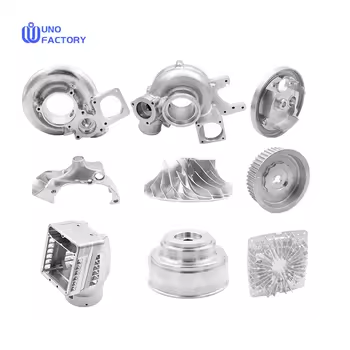Time to read: 6 min

When choosing a CNC prototyping service, cost is a critical factor. This article will delve into the various factors affecting the cost of CNC prototyping and provide suggestions for optimizing costs.
Introduction
In the manufacturing industry, CNC prototyping is favored for its precision and efficiency. However, the issue of cost often leaves clients hesitant. This article will lift the veil on the costs of CNC prototyping, helping you understand the key cost drivers behind it.
The True Cost of CNC Prototyping
The cost issue of CNC prototyping has always been a focal point of industry discussion. Although there is a plethora of information about CNC prototyping costs online, these details often contradict each other. This article will guide you through the key factors that influence the cost of CNC prototyping.
Cost Drivers
Design Complexity
Design complexity is one of the main factors affecting the cost of CNC prototyping. A simple design implies less machining time, thereby reducing costs. If your design includes complex geometric structures, such as undercuts, various hole sizes, and a high level of detail, then the machining time will be longer, and the cost will correspondingly increase.
Tolerance Requirements
Tolerance requirements are another key factor. CNC machining is one of the most high-precision manufacturing processes available today, but not all parts always require the highest degree of precision. The tighter the part tolerances, the higher the cost of prototyping, due to the additional time required to achieve high levels of precision.
Material Choice
Material choice directly affects the cost of CNC prototyping. Plastics are generally cheaper than metals, with ABS being one of the most cost-effective plastics. Among metals, aluminum alloys are often the most cost-effective, making them popular for prototyping applications.
Finishing Options
Finishing options are another significant factor that determines the cost of CNC prototyping. Different post-processing options have different price tags. Fortunately, there is also the option for no post-processing (also known as "as-machined" or "as-milled"), which is viable for prototyping applications on a tight budget.
Indirect Cost Drivers
Type of CNC Machining
While this is a topic for another blog article, there are many variations of CNC machining, some of which are more advanced or more costly than others. For instance, there are 3-axis and multi-axis CNC machines, as well as milling and turning machines. Each of these falls somewhere different on the price spectrum. For example, a 3-axis CNC turning machine has a lower CNC prototyping cost than multi-axis machines such as the 4-axis and 5-axis machines, which are capable of making prototypes with more complex geometries.
Order Quantity
Order quantity may seem obvious: the more parts you order, the more you will pay. However, it is more complex since economies of scale come into play. This means that the cost of ordering one part may not necessarily increase relative to how many parts you order. Instead, the larger the volume of parts, the cheaper the cost per part will become.
Labor Costs
Another factor that determines the cost of prototyping is labor. The cost of CNC machining is not only made up of material and machine costs: CNC machining providers also have to pay a highly skilled team of operators, as well as design engineers and other support staff. Labor costs are therefore built into the quote you receive from your CNC service.
The cost of labor is, however, directly tied to many other elements mentioned in this article. For instance, a prototype with complex geometry that will take longer to manufacture will require more labor or more experienced labor. This leads to a higher CNC prototyping cost than a simple part that requires less time to machine and thus less labor.
Labor costs are also driven before the manufacturing stage. If your design requires digitization or optimization for production, the services you are outsourcing to will factor the costs of a design engineer into your production costs.
Conclusion
Understanding the various factors that determine the cost of CNC prototyping is crucial when considering outsourcing to a CNC prototyping service. With the analysis provided in this article, you can better understand the cost structure of CNC prototyping and make informed decisions.




